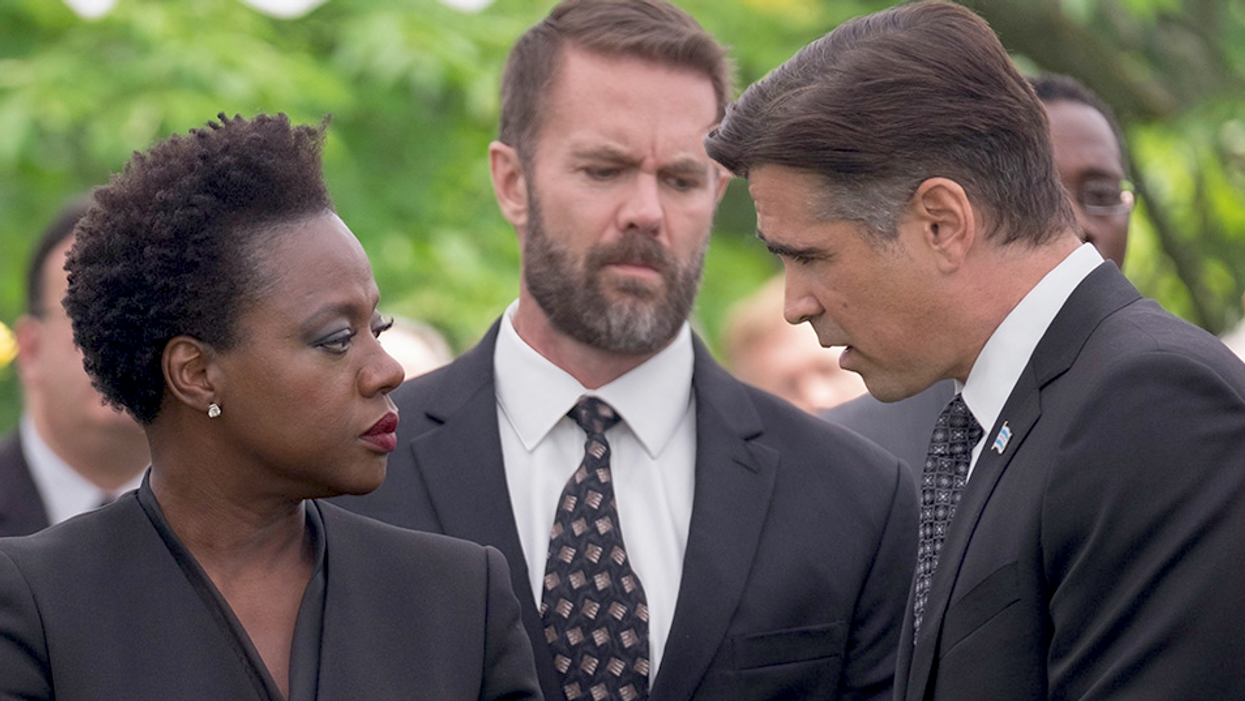How Location and Visual Motifs Tell the Story in 'Widows' [Video]
Steve McQueen's heist thriller Widows incorporates the city of Chicago in amazing ways, teaching us how setting can be an important character in a film.

Widows follows Veronica (Viola Davis), wife to Chicago criminal Harry Rawlings (Liam Neeson). After Harry and his crew are seemingly killed during a robbery, Veronica approaches the other widows with a plan to steal millions from a local politician (Colin Farrell) in order to pay back the crime boss (Brian Tyree Henry) Harry robbed.
The film is more than just a crime thriller, incorporating all the human drama and emotional depth that Alice (Elizabeth Debicki ), Linda (Michelle Rodriguez), and Belle (Cynthia Erivo) also bring to the story as well-developed female characters. It's a complex plot about relationships and politics as well as crime.
The Chicago setting allows the film to also explore class and race in ways that do not feel overt. Hint of Film's latest video explores all the ways location and visuals in Widows are used, not only as key storytelling devices but also as characters themselves. Watch the video essay below.
[Warning: Spoilers Ahead]
What locations say about characters
Smart filmmaking is able to communicate a lot of information visually, negating the need for expository dialogue. McQueen does this expertly in Widows in several cases. When characters are introduced, they appear in settings that tell the audience a lot about them in just a few seconds.
Belle appears hard at work in a humble salon, braiding hair. Linda is first seen in her Little Village boutique, surrounded by quinceañera dresses. Alice, when she first appears with her husband, is in an apartment filled with gaudy excess -- a motorcycle, flat-screen TV, expensive sound equipment. Later, when she's living alone, a lot of these expensive things are missing, signaling the beginning of her emotional maturation.
Veronica as the film's quiet, stoic lead relies even more on setting to communicate her emotional state and journey.

But because the apartment is financed through Harry's crimes, he permeates the space as a character. The lighting of these settings almost always has a blue tint. Blue is a color that becomes associated with Harry because he is often seen in blue clothing or in blue lighting.
Hint of Film also wisely notes that Veronica is often shown with or behind glass, including windows, mirrors, shower doors, and car windshields. The video posits that this represents a protective layer around the character that is shattered only when she realizes her husband is actually alive and having an affair.
This is shown when Veronica has a flashback to the same moment twice. She remembers a morning with her husband in the shower, when she teasingly offers a drink from his flask but then takes it herself. (This is a moment that also plants the flask as a visual cue to her husband.) The first time the audience witnesses this scene, it's through the shower door glass. The second time, it's from a new perspective—behind Veronica, outside the shower.
Color theory in Widows
Color also plays a big role in the movie, but especially for Veronica's character. She is seen wearing primarily black or white clothing, which reflect the main colors of her apartment setting, as well.
One startling red outfit is introduced for the scene where she discovers her husband's affair. It's a surprising costume change that helps focus the audience's attention.
Red is then linked to her late son, who died in his red car as a result of police violence. The color red also appears in his room, where a single red chair remains. This gives this color, and this setting, even greater emotional impact.

In Veronica's final sequence, she spots Alice in a diner. The setting has prominent windows and is covered with mirrors. Veronica's last action is to follow Alice out of this glass-filled structure, leaving that setting and its emotional baggage behind. It's also important to note that she is wearing tan in this scene for the first time, matching Alice's tan coat.
Mulligan vs. Manning
One of the other ways location is used is to draw a vivid comparison between the two politicians running for alderman of a South Side ward in the movie. Jack Mulligan (Farrell) comes from a wealthy and domineering family, while Jamal Manning (Henry) is a local crime boss financing his own campaign through criminal activity. Their individual settings reflect those characteristics.
Hint of Film's video includes one of the movie's most amazing and impactful sequences, which shows this distinction clearly.
Mulligan leaves a small rally for women of color, held in an empty lot near a nondescript housing development. The camera stays on the car's exterior for one long shot, giving the audience a clear view of how, in just two minutes, the landscape changes dramatically from poor and underdeveloped to the green lawns and brick buildings of Mulligan's upscale neighborhood.

Chicago's L trains
One of Mulligan's goals in the film is to push through an expensive expansion of Chicago's elevated train system. This goal is criticized as self-serving, because residents of the ward will not benefit from the extension.
The film confirms this when Belle must dash after a city bus, not the train, to leave her neighborhood. Alice and Linda do take the train at one point, but it is to travel downtown, not in one of the city's other neighborhoods. Veronica uses a private car as a symbol of her wealth and status.
As the video points out, the L train is still highly visible throughout the film as one of Chicago's most important characteristics.

What's next? Explore more on color and film theory
Widows is an awesome and sadly overlooked film that utilizes color and setting in smart ways. Read more about how color theory can make you a better filmmaker, how color is linked to emotion, and how color can be used in storytelling.
Source: Hint of Film











